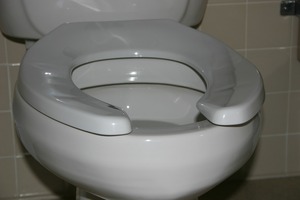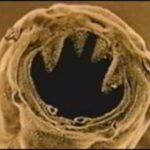Let’s face it: All kids have episodes of loose poop or diarrhea. But do you know what causes it, the signs and symptoms and how to control it? Simple things such as changes in diet can sometimes cause diarrhea, like drinking too much fruit juice, eating an extensive amount of spicy foods or the use of certain medications, especially antibiotics. Diarrhea can also be the result of an intestinal problem, such as inability to absorb nutrients or an allergy to foods. Another reason for loose poops are from viruses, bacteria and parasites. Depending on the reason for a child’s loose poop determines how easily and the time frame it takes to clear up.
What are the signs and symptoms?
Diarrhea is not a disease, but rather a symptom of another underlying condition. According to the American Academy of Pediatrics, the signs and symptoms of diarrhea are:
* Frequent loose or watery stools
* Abdominal cramps and tenderness
* Possible fever
* Generally not feeling well
* Blood in the stool
If your child’s loose stools are caused by minor food changes, the episodes should subside without too many problems. The common stomach flu (gastroenteritis) may cause diarrhea along with nausea and vomiting. Viruses such as Rotavirus are common in the winter months. The Enteroviruses are more common in the summer and are the cause of fever and generalized illness, along with diarrhea.
Although picking up a bacterium is less common, it may cause bloody diarrhea. Bacteria such as Shigella, Salmonella, Campylobacter, E.coli and Clostridium dificile can enter the body by the fecal-oral route with other infected people and, unfortunately, by contamination of foods during processing. Parasites can be picked up, such as Giardia and Cryptosporidium.
If a child has profuse and extended diarrhea, then many pediatricians will do stool studies to find out the cause. Cultures and microscopic examinations may be performed.
How is diarrhea spread?
* Children are notorious for putting fingers in the mouth. The fecal-oral route is when feces-contaminated food, hands or surfaces are touched and make way to the mouth.
* Water or food that is contaminated by human or animal feces, for example in swimming pools
* Contact with raw or undercooked poultry
* Contact with animals in the child’s environment, such as puppies, reptiles or poultry, or during trips to petting zoos or pet stores.
How do you control it?
* Ensure children get immunizations for Rotavirus.
* Use good hand-washing techniques at all times, especially after using the toilet, playing outdoors in the dirt and even playing with other children and toys. Make sure hands are washed before any food preparation or eating.
* Make sure food is cooked well and stored properly.
* Wash fruits and vegetables before eating.
Treatment goals in diarrhea include relief of symptoms and correction of underlying disorders. Clear liquids are prescribed for children to prevent dehydration and electrolyte imbalances. There are oral rehydration solutions to replace body fluids, such as Pedialyte. Along with these products, feed the kids broth (my children’s favorite was chicken with rice soup, which included the rice from the BRAT diet), flavored gelatin, popsicles, water, weak decaf or herbal tea and sports drinks. Introduce the BRAT diet — bananas, rice, applesauce and toast — as long as there is no vomiting combined with the diarrhea.
Always check with your doctor when in doubt about your child’s condition. Call a medical professional if:
* The stool contains blood or mucus
* Diarrhea developed after a trip outside the United States or camping
* Loose movements lasting longer than two to three days
* Signs of dehydration (dry mouth, scant urination, sunken eyes or no tears when crying)
Hopefully your child’s loose poop will not last long and he/she will be on the road to healing!
Sources:
KidsHealth – Diarrhea
Managing Infectious Diseases in Child Care and Schools,” American Academy of Pediatrics; 2009



